Trip Introduction: 14 Days Short Everest Base Camp Trekking
Where does the Everest Base Camp Trek Begin? What Can I Expect?
This 14-day exclusive highly rated Everest Base Camp Trek begins and ends in Kathmandu. The trek begins with a guided and informative pre-trip discussion in Kathmandu, followed by a trans-Himalayan flight to Lukla, the trek’s starting point. This 14-day journey includes daily walks in and around the Gumbas/Monastery, prayer flags, a lush forest, and mesmerizing high snowy peaks. At dusk, it’s time to gather in local tea houses and enjoy warm hospitality and delectable local cuisine. Acute mountain sickness is almost always unavoidable, so our 14 days short Everest Base Camp Trekking itinerary is designed to reduce this risk. Acclimatization is essential for success in this area.
Namche Bazaar is where we usually acclimate. This bustling highland town is ideal for exploring, followed by a short hike to Khumjung for a closer look at Sherpa culture and age-old traditions. Then we travel to Tengboche, a higher village with a monastery nestled in the mountains with a view of Ama Dablam. Then we proceed to Tengboche and Dingboche. The temperature drops quickly here, and the tree line is crossed by an alpine zone, followed by a mix of rock and snowy terrains. Later, we must spend the night in Lobuche before hiking to the highest human settlement, Gorakshep, the next morning. This is a place to refuel and prepare for the long journey to the glacier that leads to Base Camp. From Base Camp, the view of the glacial Khumbu Ice Fall and jagged peaks is breathtaking. This area is also known as Kalapatthar, a great spot to catch the first rays of the morning sun. You will also have an uninterrupted view of Mount Everestpeaks and other surrounding high peaks from the summit of Kalapathar. Finally, on our way back to Lukla, we will take alternate routes and stay in various villages.
Is 14 Days Short Everest Base Camp Trek trip right for you?
The trek to Everest Base Camp may be difficult for beginners, but reading a description does not convey the entire adventure. Occasionally, expectations do not match reality. Everyone must attempt and muster the courage to do so. If you are healthy and active, there is no age limit for trekking to Everest Base Camp.This walk is readily completed by those aged seven to 70. Youngsters under the age of 14 who wish to hike should either visit with family members or hire porters to carry the larger goods, because the children will not be able to manage the heavy loads through tough terrain, and you don’t want to have to carry all their belongings as well as your own. People in their golden years may take longer to trek since they must be more health care to complete the walk cheerfully. People who have Uric acid or respiratory problems should be cautious before embarking on a journey. Before embarking on the journey, everyone must be physically and psychologically prepared. One should work up to being able to walk or trek for 5-6 hours without stopping.
How to prepare for trekking on Everest?
Trekking on Everest demands you to be physically fit because the route is long and you will progressively descend into high elevation. To finish the journey, we must be intellectually and spiritually prepared. Warm clothing, hiking poles, a water bottle with water capsules for purifying water, UV protection rays to avoid snow blindness, and a face mask to keep your skin warm. Yoga may help you coexist with less oxygen and atmospheric pressure since it aids in breathing. Packing and double-checking all of your required equipment Taking more medications if you are unwell.
What Is the Best Period to Visit Everest Base Camp?
In general, the best seasons for Everest Base Camp Trek are from mid-September to mid-December in autumn and from March to May in spring. During this time of year, the weather is clear and stable, providing the best opportunity for spectacular views. However, the nights can be very cold, especially at higher elevations, and it is strongly advised to bring a sleeping bag to keep you warm and cozy throughout the trek. More weather-related risks exist during the winter months of December to February, as well as during the summer months of June and July. All things considered, April might be the best month to trek to Everest Base Camp. The month falls in the middle of spring and the weather is as nice as it can get in the Himalayas.
How difficult are the 14 days Short Everest Base Camp Trek? Can I do it?
The 14 days Short Everest Base Camp Trek is for everyone; it is doable with a little planning and determination. The best part about this trek is that no advanced technical skills are required. The only requirement is the endurance to walk for long periods with many up-and-down climbs.
Its altitude is what makes it particularly difficult. This can sometimes result in severe mountain sickness while trekking. As a result, properly acclimatizing your body before your next altitude attempt is critical. Keep hydrated and walk at a slow pace. However, with adequate rest and a slow pace, the distance can be safely covered. Your Trekking Planner guide will be with you every step of the way.
Optional Activities to do in Kathmandu Before or After Your 14 Days Trek to Everest Base Camp?
We provide a variety of options for you to choose from during your time in Kathmandu. These opportunities allow you to immerse yourself in the traditional way of life and culture. You have the option of visiting Kathmandu city tours, an old-age home, ethnic cooking classes, a yoga session, an orphanage, or a community school. These exciting options will provide you with a unique perspective and a memorable experience while in Nepal.
Outline Itinerary- 14 Days Everest Base Camp Trek
Day 01: Arrival in Kathmandu and trip preparation, 1,350m/4,429ft
Day 02: Fly to Lukla, 35 min flight and trek to Phakding, 2,830m/9,187ft, 3-4 hrs walk
Day 03: Trek from Phakding to Namche Bazaar, 3,438m/11,280ft, 5-6 hrs walk
Day 04: Acclimatization Day in Namche Bazaar, 3,438m/11,280ft
Day 05: Trek from Namche Bazaar to Tengboche, 3,870m/12,697ft, 5-6 hrs walk
Day 06: Trek from Tengboche to Dingboche, 4,360m/14,305ft, 5-6 hrs walk
Day 07: Dingboche, Acclimatization, 4,360m/14,305ft
Day 08: Trek from Dingboche to Lobuche, 4,940m/16,208ft, 5-6 hrs walk
Day 09: Trek from Lobuche to Gorak Shep, visit Everest Base Camp, 5,364m/17,599ft, 6-7 hrs walk
Day 10: Trek from Gorak Shep to Kala Patthar to Pheriche, 5,545m/18,193ft, 7-8 hrs walk
Day 11: Trek from Pheriche to Namche Bazaar, 3,438m/11,280ft, 6-7 hrs walk
Day 12: Trek from Namche Bazaar to Lukla, 2,800m/9,187ft, 6-7 hrs
Day 13: Fly to Kathmandu, 1,350m/4,429ft, 35 min flight
Day 14: Final departureImportant Note
- Every day of the year, trip departures are available.
- This trip can be completely customized. Please contact us if you want to customize the trip.
- This trip is available on a fixed departure basis as well as a private group basis.
- If you are traveling alone or with your family, you can book this trip privately.
- We also provide only guide and porter service, please contact us
- Have a large group? We can meet all your requirements.
- We can work with you to make it affordable.
- We accept online payments and instant bookings.
- If you are an Indian passport holder the cost will be INR 86500.00 per person.
Weather and Climate (Everest Base Camp).
Even during the best seasons, the Himalayan climate can be unpredictable. April and May to the first week of June will be the best months in the spring because the days will be longer and there will be more sunlight hours.
Morning and night-time temperatures can drop below freezing in areas higher than 3,000 meters.
The autumn season, from September to November, is another great time for treks around Everest base camp and other areas of the Himalayas. Days are generally clear with great views, and it is a good time to summit the top of the peak, though it is much colder in the autumn season, with extreme cold during mornings and nighttime, when daylight is much shorter.
Everest base camp area-Local Culture and Religion.
Sherpa is the indigenous people of Mount Everest and other higher Himalayan regions; the term “Sherpa” is derived from the Tibetan language. Sher means east and Pa means people, and the Sherpa migrated from Eastern parts of Tibet to the high Himalayas of Nepal around the Mid-East and Far Eastern Himalayas ranges.
For more than 400 years, the Sherpa have been farmers and herders of livestock such as cows and yaks. Their strong Buddhist religion and fascinating cultures are intertwined, which you can see while walking around the villages on your trek.
Every Sherpa village has a monastery, some of which are over 500 years old, such as the “monastery of Thame and Pangboche villages.” The famous Thyangboche monastery was much older, but it was destroyed by fire in 1991 and has since been rebuilt to its original design.
As you walk from village to village, you will pass many prayer walls and religious monuments such as Stupas (domes) with rows of spinning prayer wheels. All of this contributes to your journey’s authentic cultural experience.Sherpa men were the first mountain trekking guides, and they continue to attract many visitors each year.
14 Days Everest Base Camp Trek-Travel Insurance.
Trekking Planner Nepal strongly advises and recommends that all clients purchase Travel and Medical Insurance in case of unforeseen circumstances during their Himalayan vacation. World Nomads Travel Insurance can provide Travel and medical Insurance for your upcoming holiday in Nepal Himalayan destinations.
All our hikes, trekking, and tour programs have itineraries where accommodation is set with respective Hotels / Lodge / Home Stay, Guest House, and Resorts, as well as camping in some remote areas. However, depending on the fitness of the clients, the availability of vehicles on time, flight delays, cancellations, unfavorable weather, and road or trail conditions, some days may be longer or shorter. Trekking Planner requires clients to purchase Travel and Medical Insurance at the time of booking. All tours and treks require this. Insurance should include adequate coverage for the duration of the tour/trek to cover personal injury, death, medical expenses, and repatriation expenses in any mode of transportation on emergency evacuation, such as helicopter rescue or air ambulance, as well as baggage coverage.
In extreme cases, your chosen tour destination may differ from the program itineraries. In extreme cases, we may be forced to reroute or cancel the trip due to political issues, riots, bad weather, damaged roads, poor trail conditions, or the situation and condition of the porters. The company reserves the right to cancel the trip due to unavoidable circumstances beyond our control, such as if the number of travelers is lower than expected for the trips selected. Please bear with us in this case, and we will do our best to adjust the itinerary for the trip to the best of our ability for your convenience.
Accommodation facilities in Everest base camp Trekking.
All our hikes, trekking trails, and tour programs follow itineraries that include lodging in hotels, lodges, homestays, guest houses, and resorts. Camping in some remote areas is done according to the itinerary. Some trails may take longer or shorter depending on the fitness and pace of the clients, vehicle availability, flight delays or cancellations, unfavorable or bad weather conditions, roads, or trails.
As an underdeveloped country, when we go up in the Himalayan region, the vegetation and density of local people decrease, which is one of the main reasons why we sometimes must compromise for the best services. However, because this is a tourist route, most amenities are still available, though some may necessitate a compromise. For example, 24-hour electricity, laundry services (due to a lack of warmth and sunlight), internet, fruits, hot showers, toilet commode, room quality, and availability (standard quality rooms are found which are designed for meeting the basic requirements). However, the trekking planner team makes every effort to provide the best available services and facilities.
Acclimatization and Communication on Everest base camp Trek.
Adapting to nature, temperature, climate, traditions, cultures, and food is one of the most important factors in completing and enjoying the journey. As we plan our itineraries, we always keep in mind that we should not ascend more than 800 meters in a single day. Doing so may cause altitude mountain sickness and breathing difficulties. However, if we slow down and include stops along the way, we are assisting our bodies in adapting to changes in temperature, weather, and climate.
We are not going on a trek to walk all the time, and hiring a guide does not imply that he or she is leading and you are just following, but asking questions about the local people, their way of life, traditions, and culture is a good way to learn more about the traditions and cultures of the place we are visiting.
Sometimes foods and beverages must be avoided because they cause physical and mental stress, resulting in diarrhea, constipation, headaches, anger issues, a sense of mistreatment, and a lack of services. So, before embarking on a trek and inquiring about available accommodations, visitors should always specify which foods and beverages they are allergic to or do not consume, as this will assist in developing a plan B for food and beverages.
Electricity, Internet, and Battery Recharge: – Everest base camp Trekking.
As a developing country, facilities related to electricity are not available in some regions, and even if they are available, load-shedding and electricity shortages may occur due to natural or artificial causes. Carrying a power bank is recommended for charging the batteries of cell phones, cameras, flashlights, and other devices.
Some places charge extra fees to recharge the battery because they buy or use electricity from outside sources. Generators, solar panels, and even private hydropower are examples.
Because of the electricity as well as the private poles and the amount of money that the locals must invest heavily on poles, wires, and internet service providers, the internet requires a certain amount of payment but varies from place to place and is not applicable everywhere.
Altitude Mountain Sickness (AMS).
Anyone is susceptible to Mountain Altitude illness. The drop in air pressure at high altitudes makes breathing difficult owing to a lack of oxygen. It mostly occurs over 3300m (10,000ft).
- The following are the signs and symptoms:
- Headache/Dizziness
- Nausea/Vomiting
- Tiredness/Fatigue
- Tired yet unable to sleep
- Appetite loss
- Anger/Stress
The best way to avoid AMS is to dress appropriately for the weather, drink enough of water, eat healthily, and move slowly. If the body is not feeling well, it is a good idea to ask for rest or sleep. Keep hydrated and follow the tour leader’s instructions and advice regarding altitude mountain sickness.
Washing and Toilet facilities on the Everest base camp trek.
All guest homes have hot showers, which may be in the form of a shower stall or a pail of hot water. Please keep in mind that there may not be enough hot water for all hikers at high elevations. For environmental reasons, limit the usage of hot water unless it is solar-heated. Every lodge has a washing machine, but you must provide your soap. If the water is frozen, simply request that your guide bring you a bowl of warm water.
Toilets are mostly squat toilets in the Asian design. The restrooms are located outside of your room. You’re in the mountains, so cleanliness may vary. It is not acceptable to flush toilet paper. Instead, use the trash can located inside the restroom.
Additional information
| Physicality | Beginner- Intermediate |
|---|

- Resurgence travel can provide customised tailored itineraries for our client’s Everest Base Camp Trek needs.
- Resurgence Travel can conduct the trip by providing guide and porters-only service for 14 Days Everest Base Camp Trek.
- resurgence Travel can provide accommodation-only facilities for the 14-day Everest Base Camp Trek if required.
- Resurgence Travel can provide flight tickets for Kathmandu to Lukla and Lukla to Kathmandu
- Resurgence Travel can provide only flight service from Ramechhap to Lukla and Lukla to Ramechhap.
- Resurgence Travel provides only vehicle service from Kathmandu to Ramechhap and Ramechhap to Kathmandu.
- Resurgence Travelcan arrange hotel facilities of 4-star or 5-star categories or normally affordable hostels as well as per the needs of our clients.
- Resurgence Travel can provide comfortable accommodations in lodges with electric blankets and private attached bathrooms.
- Resurgence travel can arrange a helicopter return to Kathmandu or Lukla per the needs of our clients.
Note that from October 1st 2023, the flights will take place from Ramechhap, which is around 3/4 hours of drive, depending on whether you are taking a private vehicle or want to join a group to share the cost of a coaster or a bus.
Driving to Ramechhap for Lukla Flight, don’t forget these things.
- If you take a private vehicle, you can reach around a 3-hour drive from Kathmandu to Ramechhap, and the car will pick you up at the hotel or the place you choose.
- If you’re taking a shared bus or coaster towards Ramechhap, then you have to go from your place towards the bus, and the bus will have other trekkers joining as well, as soon as everyone arrives, the bus or coaster will then move towards Ramechhap airport.
Everest Base Camp Trekking Tips for Females.
- Ladies and women need to keep track of their periods.
- After tracking the periods, always keep two packs of sanitary pads with you.
- In the mountains, during the cold, you can feel cramps, and bleeding can be a little more than normal, so feel free to let the guide know about the situation and consume painkillers in case of cramps.
Suggested Equipment List.
- Duffel/Rucksack bag/Suitcase (We provide one complimentary Trekking Planner duffel bag that is to be returned after the trip).
- Day pack.
- Trekking shoes.
- Sports shoes or sandals.
- Sun Hat/cap.
- Warm woolen cap.
- Warm fleece jacket or puffy jacket.
- Waterproof Gore-Tex layer.
- Pullover or warm sweeter.
- Raincoat.
- 4/5 pairs of good quality socks.
- Hand gloves.
- 2/3 pairs of trekking trousers.
- 3/4 pairs of trekking shirts.
- 3/4 pairs of underwear (noncotton preferred).
- Sunglasses.
- Water bottle.
- 4-season sleeping bag (Optional/we can provide one if you need it. It is to be returned after the trip).
- Flash or Torch light.
- Camera and batteries.
What’s Included
If you are an Indian passport holder the package cost for the Everest Base Camp trek will be INR 86500.00 per person.
- All airport pick up and drop off by private vehicle (for both international and domestic flights).
- Welcome, and farewell dinners in an authentic restaurant.
- Two-night twin/double occupancy deluxe accommodation with breakfast at a three-star hotel in Kathmandu (Hotel Moonlight/Kathmandu Guest House/Apsara Boutique Hotel).
- Kathmandu to Lukla to Kathmandu flight with airport departure tax.
- National Park entrance fee and Trekkers’ Information Management System( TIMS card).
- A highly experienced, helpful, knowledgeable, friendly, English-speaking, well-trained, Government license holding guide. Price includes his salary, food, drinks, accommodation, transport, and insurance.
- Two guests to one porter with their insurance, salary, food, accommodation, and equipment.
- Twin/double occupancy best available lodge accommodation in the mountains during trekking.
- Three meals a day; breakfast, lunch, and dinner, and tea/coffee while trekking.
- One-hour complimentary spa/massage in Kathmandu after the trek.
- First aid kit.
- Trekking Planner’s sleeping bag, down jackets, T-shirt, cap, and duffle bags for porter, city, and trekking route maps – if necessary.
- Arrangement of emergency evacuation service (should have insurance for emergency evacuation and will be paid by your travel insurance company).
- Oximeter to check your pulse oxygen saturation and heart rate twice daily during the trek (very useful to check Altitude Mountain Sickness(AMS) symptoms). This helps ensure your trek is as safe as possible.
- All applicable government and local taxes per the itinerary.
- The sharing bus ride from Kathmandu to Ramechhap for Lukla flight is included both ways.
- Fresh fruits after dinner every night as dessert during the trek.
- Cookies and biscuits during the trek for cookie time after reaching the tea house.
Additional information on the extra services that can be added to this package for Luxury seekers.
- If you want to upgrade the accommodation from a normal lodge to a comfort lodge in the mountain the extra cost will be USD $290.00 per person
- If you want to upgrade the accommodation from 3 stars to 4 stars in the city and normal lodge to a comfort lodge in the mountains the extra cost will be USD $370.00 per person
- If you want to upgrade the accommodation from 3 star to 5 star in the city and normal lodge to a comfort lodge in the mountains the extra cost will be USD $490.00 per person
- If you want to take a private porter the extra cost will be USD $220.00
- If you want to take a sharing helicopter ride from Gorakshep to Lukla the extra cost will be USD $600.00 per person
- If you want to take a helicopter ride from Kathmandu to Lukla or Lukla to Kathmandu the extra cost will be USD $500.00 per person
We provide best-in-class service at the most reasonable and affordable price. Book now, or call Nepal Trekking Planner Mobile at +977-9851071767. We are available 24/7 on What’s App
What’s Excluded
- Your Nepal Visa fees.
- All the International airfare to and from Kathmandu (no need to pay departure tax for international flights).
- Lunch and dinner in Kathmandu.
- Personal travel and health Insurance, Insurance for helicopter evacuation.
- In case of extra nights accommodation, lunch and dinner in the city due to early arrival and late departure as well as early back/return from mountain/trekking (due to any reason) than the given period of the itinerary.
- Your expenses such as ( laundry, baggage charge, phone calls, battery recharge, bar and beverage bill, boiled or bottled water, hot and cold shower, extra porter.. etc).
- Tips to the trekking crews and drivers.
- Extra expenses due to flight delays, strikes, weather conditions, or any event out of our control.
- Taking a private jeep towards Ramechhap will cost extra, but it will be worth it.
Q1. What should I do if I get sick in the middle of the trek?
We have it all covered if in case you get sick in the middle of the trek our guides and helpers will be there to assist you. They are well experienced and trained to take different kinds of precautions and safety measures in this kind of situation. It is best advised to carry medicine called Diamox and consume it if you get acute mountain sickness issues. Also drink lots of water. If your condition doesn’t improve after first aid precautionary measures or if it becomes severe, you will be taken 300m downward from your current position. From there, you can trek again in substitute time according to the rate of your body recovery and the confidence.
Q2. Is my trip departure guaranteed under any kind of circumstances?
Under normal circumstances yes, once you book your trips with us it’s more often than not guaranteed. Even if other trekkers cancel the trek with us we still put you on the trip. Trekking Planner and its name is a guarantee in itself. We are a tailor-made outfit as the numbers never ever hinder our trekking operations. We have solutions for every problem and are committed in providing you with a hassle and stress free holidays of your choice. However situations which are out of control such as a political riot, natural disaster, pandemic, epidemic or weather catastrophes, then it might be cancelled in the worst case. Other than that our trips are 100% guaranteed and always on time.
Q3. Do i get good electricity supply and an uninterrupted WI-FI coverage in the Everest Region?
During your trek on Everest region electricity is available to recharge your phones, laptop, iPads from micro-hydropower and solar panels on a paying basis. As for Wi-Fi, you do get it on your trekking trail journey till Namche. The only two places offering free Wi-Fi are Starbucks coffee in Lukla and Everest Bakery in Namche. Besides that at other places, you need to pay for using internet services, and variation in rates does apply as per the altitude and region.
Q4. Can I make a call en-route to the Everest Base Camp?
Yes, cell phone networks can be found on the trail of Everest Base Camp trek by making use of NCell or NTC networks. However, in certain areas, there may be no coverage at all.
Q5. What is the average group size?
The Everest Base Camp Trek can be done from a minimum of 1 person to a maximum whichever the number of people. The maximum number of people is estimated to be 20 people. But for us we always try to keep the group a bit small. The advantage is that you can enjoy the trek with relative ease and comfort.
The Everest Base Camp Trek can be done from a minimum of 1 person to a maximum whichever the number of people. The maximum number of people is estimated to be 20 people. But for us we always try to keep the group a bit small. The advantage is that you can enjoy the trek with relative ease and comfort.
Q6. How can I use toilets during the trekking journey?
Ironically this is one thing which we cannot guarantee you. It is not certain or a compulsion that you will find the toilet in every place that you trek on. So you need to be ready to hide behind large rocks and continue. But in the places where toilets are found, you can use them well. It is better to carry urinal bottles with you for your convenience and safety.
Q7. Can I explore Kathmandu valley before or after Everest Base Camp Trek, is it possible?
To go around the entire cities places of interest in Kathmandu is not possible if you are on a scheduled trekking journey in a limited time frame or in a single day. But yes we take you to the main places like Pashupatinath Temple, Boudhanath stupa , and Swayambhunath temples, and a few others. For exploring the valleys that are beyond the city limits and countryside, you need to plan your trip to Nepal in such a way that you could have spare days in Nepal.
Q8. Can I extend my Everest Base Camp trek do i have any choices?
Yes, you surely can. But we need prior information in details so that we could manage the itinerary as per your requirement.
This is a spur of a moment casualty unpredictable uncertain and unseen if it occurs. We as a trekking planner outfit always have it at the back of our mind and have our preparations in place. If any kind of emergency occurs, the rescue team is called as they are always ready to go. Helicopter rescue service is also provided to prevent immediate damage.
Q10. This is my first time I have never done trekking yet. Can I do it?
Yes, you can do it. It is always wise to train and tone your body before you make it to the Everest Base Camp Trekking. This will help you to work out on your stamina and physical endurance capacity. You can also take part in the hiking and walking programs on a weekly basis, in order to increase your walking speed and make you used to it.
Q11. Which one is better to hire a guide, porter, both or guide cum porter?
For your convenience and managing your cost the best is to hire a guide cum porter. If you are with him/her you can enjoy the trek efficiently and your cost will also be minimal. S/he will show you the path as well as aid you in carrying your heavy stuff.
Q12. How much cash should I take with me to Everest Base Camp Trek?
Since you are going on a package, the amount that is required to be taken extra depends upon how much you go extra than the package, for example, extra dishes, cold drinks, beverages, bottles of water, and other extra stuff. So it depends on how much further you go, and carrying an extra 10–15 dollars per day would be more than enough.
Q13. How many days does it take to reach Everest base camp?
There are plenty of ways of reaching the Everest Base Camp. It ranges from a brisk luxury heli tour of 1 day, to a shortened 5 days, 12 days, and 14 days to the maximum of 28 days. The onus is on you to pick anyone of these which best suits your time and purpose. Trekking Planner has one of the best tailor made flexible itineraries that allows you to enjoy the beautiful panorama in and around the Base Camp trekking circuit.
Q14. Can I trek in the months of June, July, and August?
The slated months of June, July, and August, are the monsoon season. So, the rainfall can hinder your trekking plans. Also the paths are slippery and less relevant for hiking as there are high chances of falling apart. You can go for trek in this season in the Everest but it comes with unwanted and unseen risks. Therefore we ideally don’t recommend it for trekking in the monsoon seasons. However if want to try something different and out of the box at your own calculated risk and confidence then we don’t mind taking you on a trek
Q15. What are the best months to go for trekking in the Everest Base Camp Region?
The best seasons to trek to Everest are February, March, April, May, September, October, and November. In these months the weather remains clear with familiar blue skies. You can get uninterrupted panoramic views at a stretch of few metres at each twist and turns. You get to encounter exotic flora and fauna along with vast and unpredictable landscapes and ecosystems. Besides that you can also have the best snowy experience as there are chances of snowfall too for you to observer if luck is on your side.
Q16. What kinds of clothes and gear are needed?
Clothes and gears are always vital and hold a thin line between success and failure. So, it is very important to pack the bags with needed stuff. Some major clothes and gears needed are trekking poles, socks, shoes, boots, gloves, hats and scarfs, and so forth. For further information, you can check our Suggested Equipment Checklist for information in details.
Q17. Can I cancel the trip if I book it once?
Yes, you can however conditions do apply. For instance if you cancel the trip in 60 days remaining for the trip, your full amount will be refunded. If you cancel the trip in the 30 days remaining for the trip, 25% of full amount will the refunded
But if you cancel the trekking trip in a week or less, your money will not be refunded as per the companies’ policy.
Q18. How can I join the group for trekking in the Everest Base Camp region?
We have plenty of choices for Everest base camp trekking. It can be done both individually and in a group. For a group trek, you first need to make a group. You can make your own group from your country involving your friends, family, relatives and other known people. Once decided let us know and inform us about that so that we can give you the best possible services according to that. If somehow you are not able to form your own group then, you can simply contact us and we will place you in the group with others.
Q19. Do I have a luxury trek option while doing the 14 Days best short Everest Base Camp Trekking?
Yes, with Trekking Planner one always has flexible options of all kinds of adventure seekers. Luxury is one thing that people always vouch out for more often than not. For luxury trek seekers we have a specially designed package Everest base camp luxury lodge trekking’ which provides overall best food and accommodation facilities. This kind of trekking, gives you the opportunity to enjoy the natural majestic environment with great pleasure and ease. To get more details and information, you can check our package Everest Base Camp Luxury Lodge Trekking.
Q20. What is the food and accommodation like on the route to the Everest Base Camp Trek?
While trekking to the Everest Base Camp, we will spend nights at local tea houses and lodges. The accommodations generally are based on twin sharing. Single rooms can also be made available but it for that you will have to pay an extra $200 which is much more expensive. However in some places, single accommodations are not allowed because of less space.
During the entire trek journey, you get to enjoy authentic national and international foods and cuisines. It can be Tibetan, continental, Italian, and Indian. Trying out traditional Nepalese ethnic foods are mind-blowing for your taste buds just for a difference. You can also enjoy other foods like hot chocolates, drinks of different varieties and slices of bread and snacks. Breakfasts and dinner will be served on the same hotel/tea houses where you spend the night, according to the menu. Lunch will be served on the way where ever it remains suitable. Finally welcome and farewell dinner will be served in Kathmandu in full Nepali style.
Q21. Do i need crampons to climb Everest Base Camp?
No, you will not need crampons for Everest Base Camp trek. You will just need good quality hiking boots and hiking poles for extra support and stability. If you are on a trek during the early spring months of January or February, you might need crampons depending on the intensity of the snowfall in that vicinity.
Q22. Which are the shortest and the best itinerary to pick for the Everest Base Camp Trek?
The shortest and the best itinerary for Everest Base Camp is the Everest Base Camp 12 days trek. Besides that if you are really cramped up for then a helicopter tour is the best one to get a bird’s eye view of the region. Getting to step down in the base camp in just 4 hours of flight by helicopter is rewarding. The other option you have is to trek all the way to Gorakshep and take a helicopter ride from there and back to Lukla or Kathmandu.
Q23. Where is the Everest Base Camp Region located?
The Everest Base Camp trekking trail region is located in the Solukhumbu district in Nepal. It is within the Everest region.
Q24. What is the altitude of Everest Base Camp?
The altitude of Everest Base Camp reaches up to 5,364 meters / 17,598 feet on the South Face. The ascent to Everest Base Camp via south begins with a trek from Lukla through Namche Bazaar. Trekkers usually fly to Lukla and then begin their trek.




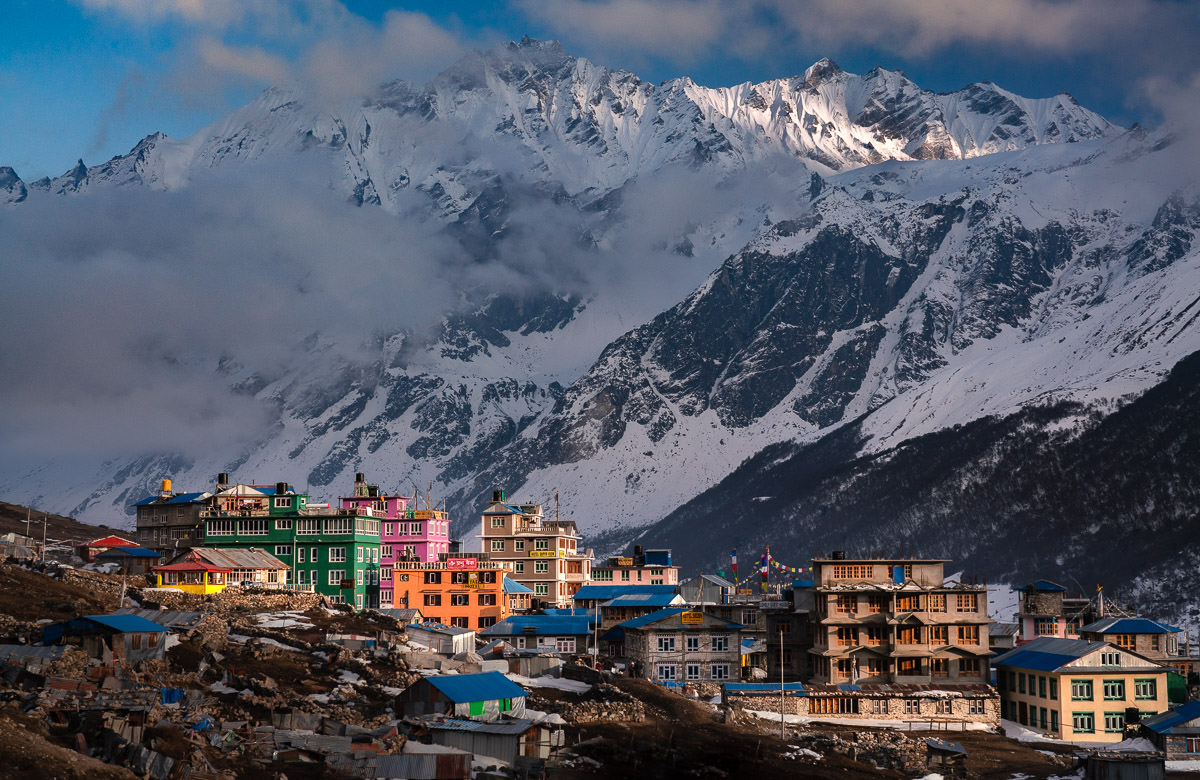
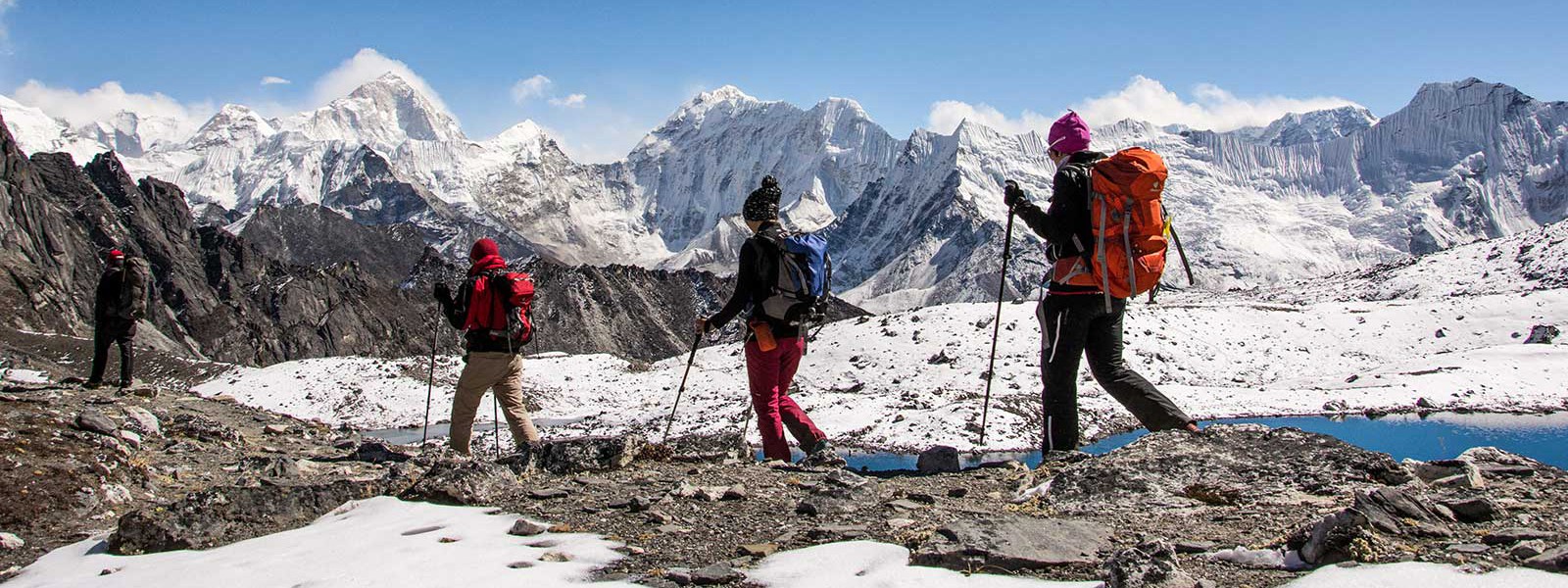
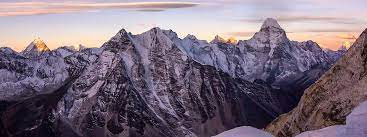
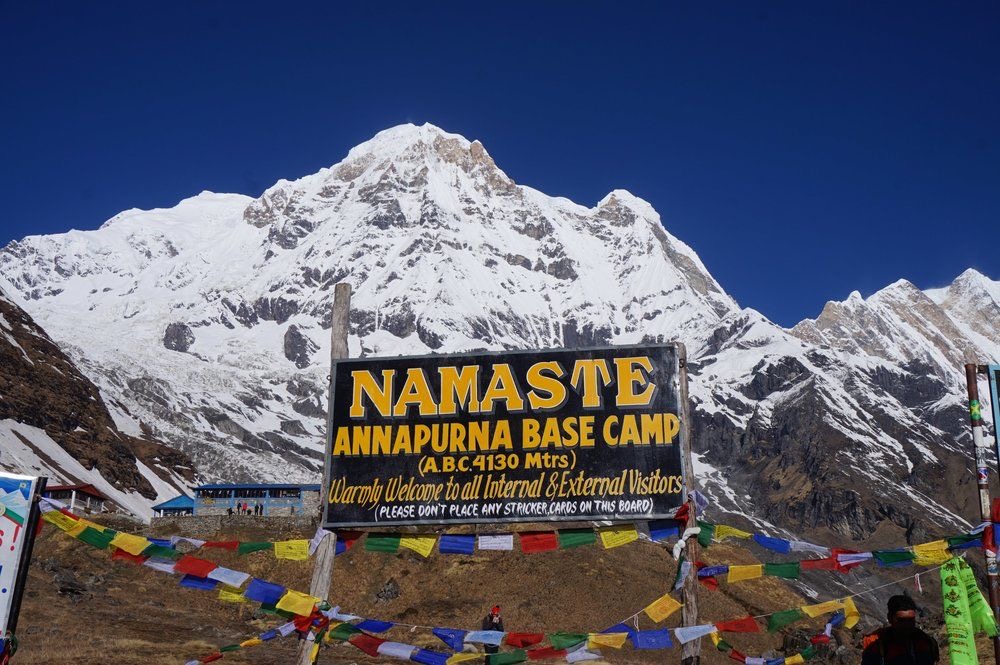
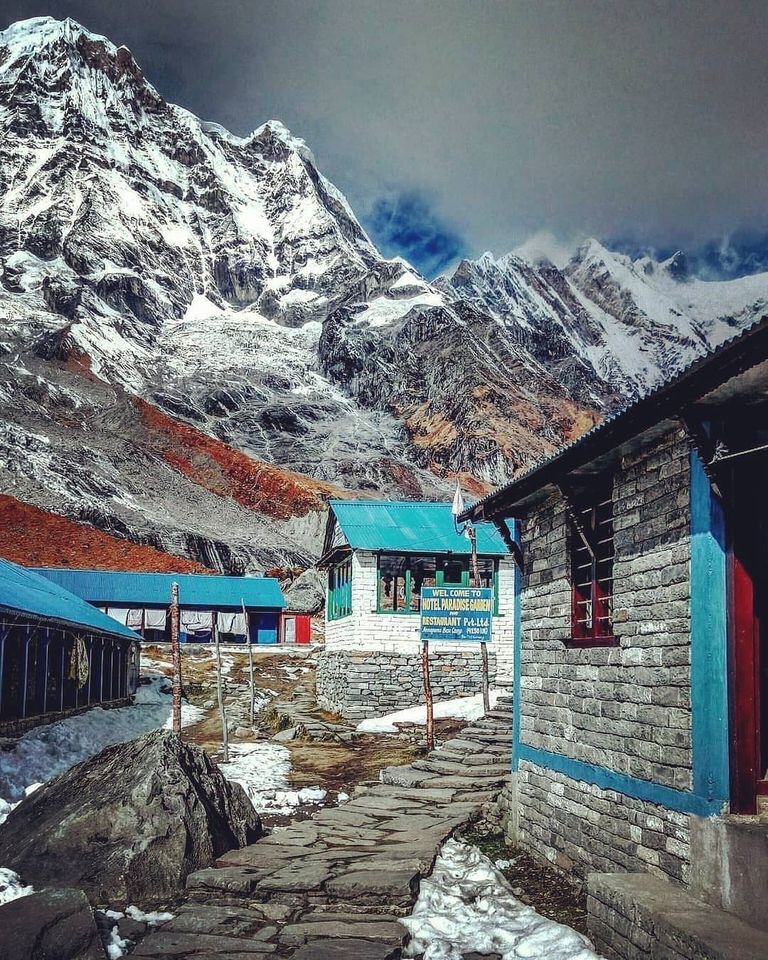
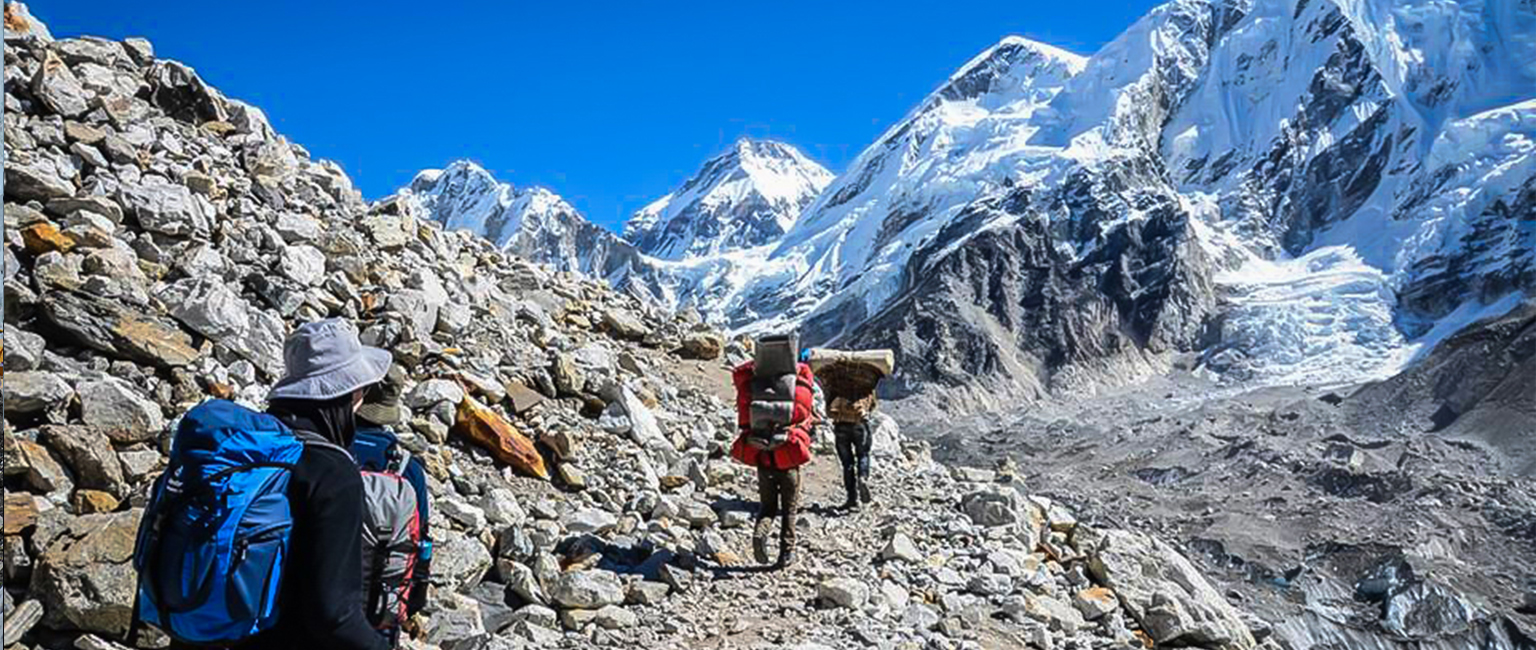
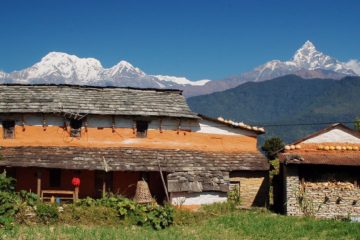
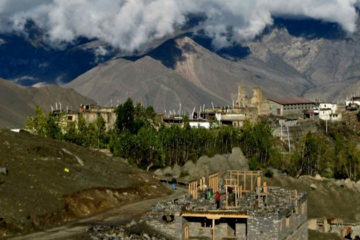
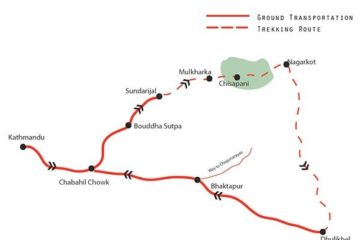
Tour Reviews
There are no reviews yet.
Leave a Review